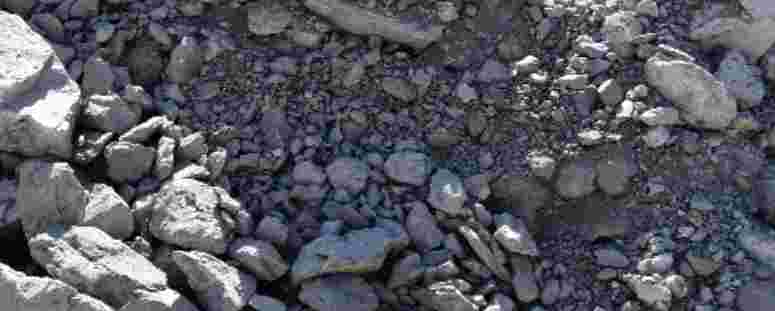Working with plastic clay offers a satisfying creative experience, whether you're sculpting small figurines, crafting jewelry, or designing decorative home pieces. But creating something from clay doesn’t end with the sculpting. The baking and finishing process is crucial—it strengthens your work, adds longevity, and gives it that professional, polished look. Here’s a comprehensive breakdown of how to properly bake and finish your plastic clay creations to get the best results.
Understanding Plastic Clay
Plastic clay is a type of modeling clay that stays malleable until baked in an oven. Unlike air-dry clays, which harden over time, plastic clay allows more flexibility for detailed work and longer crafting sessions. It’s ideal for artists, hobbyists, and professionals alike.
There are various types of plastic clays on the market, some more pliable, some stiffer—some even modified to behave like Semi Plastic Clay, offering a balance between flexibility and structure. Knowing your clay type matters, as it will affect the baking time and finishing techniques.
Step 1: Preparing Your Work
Before even thinking about the oven, your creation needs to be properly prepared.
-
Smooth the Surface: Use your fingers, rubber-tipped tools, or even a little rubbing alcohol on a cotton swab to remove fingerprints, seams, or unwanted texture.
-
Reinforce Thin Areas: If your piece has thin extensions like arms or antennae, consider reinforcing them with wire. Clay cracks easily at weak points during baking.
-
Clean Workspace: Dust, lint, and hair love to cling to soft clay. Keep your workspace and hands clean throughout to avoid contamination.
Step 2: Baking the Clay
Baking plastic clay is about precision. Too little heat and your piece stays soft; too much and it burns or bubbles. Here’s what you need to get it right:
-
Read the Instructions: Different brands of clay have different baking temperatures—typically between 215°F and 275°F (102°C to 135°C). Always follow the package guidelines.
-
Preheat Your Oven: Use a conventional oven or a toaster oven dedicated to crafting. Preheating ensures even baking from the start.
-
Use an Oven Thermometer: Most ovens aren’t perfectly calibrated. A thermometer ensures you’re baking at the right temp—not just guessing.
-
Bake on Tile or Cardstock: Avoid metal trays; they get too hot. A ceramic tile or a sheet of cardstock diffuses heat evenly and prevents shiny spots on the bottom.
-
Tent Your Piece: Cover your piece with a foil tent to protect it from direct heat and prevent discoloration or scorching.
-
Timing Matters: Bake based on thickness, not just time. A common rule is 15 minutes per 1/4 inch of thickness, but check the clay brand for specifics.
Step 3: Cooling Down
Once baked, don’t touch your creation right away. Let it cool on the tray to avoid warping or cracking. Clay is still soft when hot and hardens as it cools, so resist the urge to poke or move it too soon.
If you’re doing layered projects (for example, a figure with multiple parts), you can bake each piece separately and then assemble post-bake using liquid clay or a strong adhesive.
Step 4: Finishing Touches
Baking makes your clay strong, but finishing is what makes it stand out. Here are ways to take it from amateur to impressive.
Sanding
-
When to Sand: If your piece has bumps, uneven edges, or seams that didn’t smooth out pre-bake, sanding helps refine the shape.
-
Use Wet/Dry Sandpaper: Start with 400 grit and move up to 1000 or even 2000 for a super smooth surface. Wet sanding reduces dust and gives a cleaner finish.
-
Be Gentle: Don’t over-sand; you can wear through the clay or distort the form.
Polishing
If you're after a smooth, shiny finish without varnish, polish the sanded piece using a soft cloth or a Dremel with a buffing wheel. The more you buff, the more it shines.
Painting
-
Acrylic Paint Works Best: Use thin layers and let each one dry before applying the next. This avoids streaks and allows for richer color.
-
Seal It (Optional): While not always necessary, sealing with a matte, satin, or gloss varnish protects the paint and adds a desired finish. Just make sure the varnish is compatible with polymer clay to prevent stickiness.
Adding Mixed Media
After baking, you can combine your clay with other materials like fabric, metal findings, or even resin. This is where sourcing from industrial minerals suppliers can come in handy if you want to experiment with mica powders or special fillers to enhance the surface texture or add shimmer.
Troubleshooting Common Baking Issues
-
Cracks: Usually caused by rapid cooling or baking thin pieces unevenly. Use a heat gun or add clay in stages to help prevent it.
-
Burns or Dark Spots: Caused by baking at too high a temperature or too close to the heating element. Use a tent and thermometer to avoid this.
-
Sticky Finish: Sometimes caused by incompatible sealants. Always test a sealant on a small piece first.
Experiment and Evolve
The more you work with plastic clay, the more you’ll understand its behavior. Try combining techniques bake, sand, paint, then add gloss. Or incorporate other materials like Semi Plastic Clay blends to give certain pieces more flexibility or structural strength. Blending clays can create new textures and working properties that open up creative possibilities.
Final Thoughts
Baking and finishing are just as important as sculpting in the clay art process. Mastering these steps means your creations won’t just look good they’ll last. Take your time, follow the right baking method, and pay attention to finishing details. Whether you're a hobbyist or someone turning clay into a small business, this polish is what separates “homemade” from “high quality.”
And as you refine your process, don’t be afraid to source specialty tools or materials. Partnering with industrial minerals suppliers can be an unexpected way to find unique additives or surface treatments that elevate your final product.




